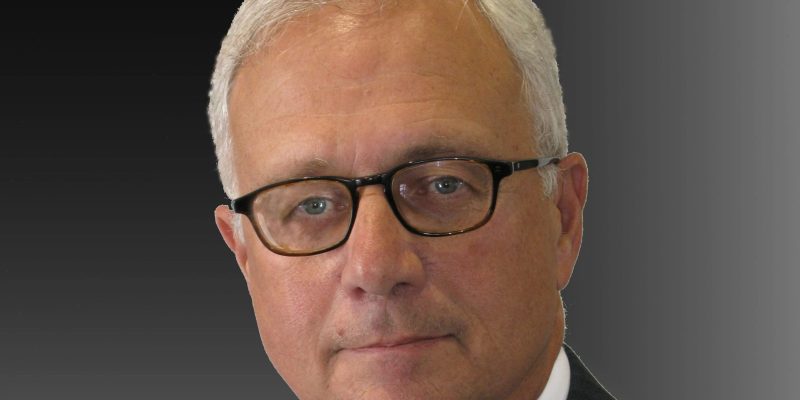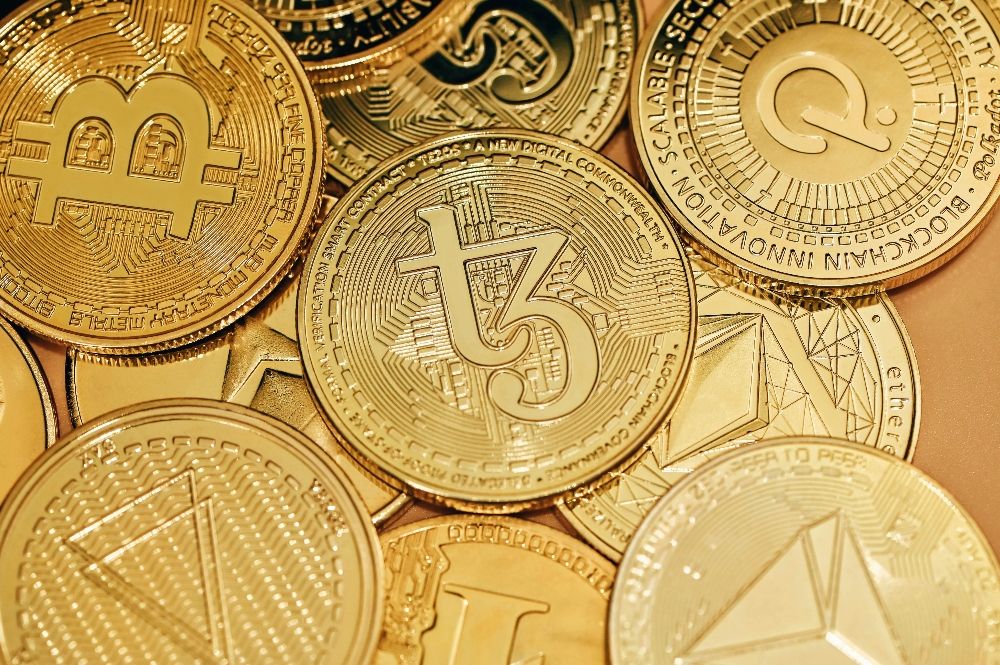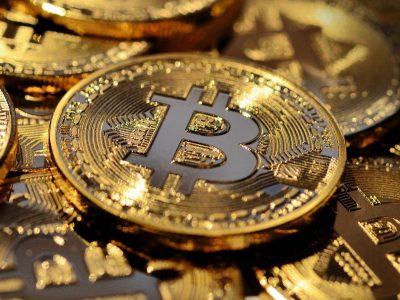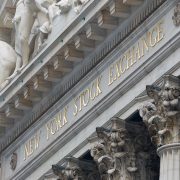
The United States has put fears of a recession behind it and even under challenging circumstances like geopolitical conflict and inflationary pressures, the stock markets are seeing all-time highs.
Ahead of the Federal Reserve’s November meeting, the market is back to playing the guessing game, expecting the Fed to cut 25 basis points with certain positive metrics like a strong September job report tempering expectations of wider rate cuts.
Ed Yardeni, president of Yardeni Research and noted economist, has a contrarian view.
In a free-wheeling conversation with Invezz, Yardeni shares why the Fed’s 50 bps rate cut in September was “too much too soon” and why it should put the brakes on monetary easing for now.
Yardeni explains why, despite volatility, the US economy remains resilient even though the current market performance has started to resemble the 1990s-style “melt-up”.
He also discusses his expectations of the economy post-elections and why, despite the broadening of the rally and rate cut advantages, mid-caps and small-caps should be avoided. Edited excerpts:
Invezz: Two months ago, stocks plunged on weak jobs data and carry trade unwinds. Now, they’re at all-time highs despite slow growth. Normal?
It’s normal as far as I am concerned. Most people thought we would have a recession which was logical and you would think that with the Federal Reserve raising the federal funds rate from zero to five and a quarter per cent in less than two years, that would cause a recession.
But I thought that the economy would prove to be remarkably resilient.
Baby boomers key to fuel US economy
I thought the consumer would continue to spend, partly because of an important story about the consumer, which is the existence of the so-called baby boom generation for many, many years.
The baby boomers have saved quite a bit. They have a lot of money now in their portfolios, in equities, insurance policies, and so on. And they’re retiring.
And they have about half of the net worth of the US households. They have about 75 trillion, not billion, 75 trillion (dollar) in assets, and they’re retiring, which means that they’re not saving anymore because they’re not earning money.
They’ve retired, but they are spending their retirement income. That is one of the reasons that the US economy has been so resilient because consumers have continued to spend, and are spending enough to provide the economy with growth.
The boomers are spending a lot of what they accumulated for retirement, and they’re also helping their younger family members or children who may need a down payment for a house, and so on.
But the US economy has done remarkably well. Even though the housing economy is in recession, car sales have been up reasonably well.
And then, capital spending is not interest rate sensitive. 50% of capital spending is on technology, and a lot of technology is essential for increasing productivity and remaining competitive.
A lot of capital is also spent on research and development, which again, companies need.
So, we were pretty much alone for the past two and a half years in saying that there would not be a recession and that the economy would grow.
Not only that, but we said that inflation would moderate without a recession, partly because China is in a recession and China is exporting a lot of deflation, particularly in global goods markets.
And you asked me about whether it’s normal. I think that’s an important word.
I think that the economy has normalized. It’s kind of coming back to where it was before the great financial crisis. Back then, interest rates were typically around 4% for the bond market, which is where they are now.
I think the abnormality was the period between the Great Financial Crisis and the Great Virus Crisis where interest rates were near zero.
So, I’m very comfortable with this economy. We turned bullish on the stock market in late October of 2022. So, we got that right.
And, all in all, we have not been surprised by the resilience of the economy. We’ve not been surprised by inflation coming down. We have not been surprised by the record run in the stock market.
Fed’s September rate cut ‘too much too soon’
Invezz: Has there been a mismatch between your reading and how the Fed has read the whole situation — how it picked up cues that it has sort of incorporated into its actions?
Well, there are a lot of people among economists who are Fed watchers. And some of them are professional Fed watchers.
I’m a Fed watcher. You have to be a Fed watcher to understand the economy and financial markets. And a lot of Fed watchers tend to be very critical of the Fed.
Some of them, I think, want to be the next Fed chair. So, they like to get a lot of press being critical about the Fed. As an investment strategist, it’s been my view that my job is not to criticize the Fed, but to understand where they’re going.
But, looking at what the Fed has done since early 2022, I’ve concluded and I’ve bet that the Fed will get it right this time.
They were a little late in fighting inflation, but they moved very quickly once they realized that. And they did contribute to bringing inflation down.
I think many other factors caused inflation and brought inflation down. But, I don’t have a criticism of what the Fed did until now.
I think the September 18th cut of 50 basis points by the Fed was too much and too soon. I mean, it’s kind of funny that within a few days or a couple of weeks of the Fed cutting the 50 basis points, we had upward revisions in our real GDP.
We had upward revisions in gross personal income, in personal savings and personal income. And we had very strong payroll employment combined with upward revisions for July and August.
So, just as the Fed got panicky that the economy was weakening and that the labor market was starting to cool off too quickly, they overreacted with a 50 basis point cut.
So, now I think they’re ahead of the curve. I don’t think they need to do it anymore. And so, we have this contrary view that the Fed will not cut at either the November or the December meeting because the data will continue to be strong.
And then it’s too soon for the Fed to declare a mission accomplished.
Inflation has come down. It’s getting close to 2%, but it’s not there yet. And we know that some of the areas of inflation, like what is called the super core inflation rate, which is the core services inflation rate, excluding housing, are still quite sticky.
Overstimulating a growing economy may bring back inflation
And so, we’re not at 2%. And if the Fed is stimulating an economy that doesn’t need stimulating; if the Fed is providing stimulus to an economy that’s growing quite well, then it is taking the risk of the inflation rebounding.
I think it was pretty terrific to establish essentially a promise that they would continue to lower interest rates. Nothing else.
There’s an election coming up and nobody knows what the result will be. And it’s conceivable that no matter whether it’s Trump, Harris-either it’s the Democrats or the Republicans, they have enough power to push through their policies, and those policies will widen the deficit and be inflationary.
So, I think the Fed is being too eager to focus on its own power and not factoring in fiscal policy.
And that’s how they got into trouble in 2021 and 2022, as fiscal policies were extremely stimulative.
And, so was monetary policy. And you combine the two of them and we had this inflation surge in 2022 and 2023, which has finally come down.
So, we’ve seen that inflation can rebound very quickly in the face of a combination of fiscal and monetary stimulus. And I think they’re running that risk.
Bond market has signalled the Fed to slow down the monetary easing
Invezz: But the market is expecting a 25 basis point cut…
Well, at the beginning of the year, the market was predicting six to seven rate cuts and that was wrong. We finally did get a rate cut on September 18th, which was 50 basis points.
And the market is still expecting rate cuts, but less so after some of the strong economic numbers recently.
And of course, the bond market is kind of agreeing with my position that the bond yield went from 3.6% to 4.1% just since the Fed cut the rate.
And, that is an indication that the bond market thinks that the Fed’s actions were too much too soon and that inflationary expectations rose in the bond market.
If you look at the difference between the 10-year nominal yield and the 10-year TIPS yield, inflationary expectations based on that have increased.
And so, I think the vote from the market, especially the bond market, is that they did too much too soon.
Invezz: A lot of economists have put out commentaries that highlight how the execution of promises by both Trump and Harris will lead to a widening of the fiscal deficit and will do nothing about the debt problem of the economy…
I mean, they’re both politicians. They’re both trying to get elected by promising to give the voters all kinds of gifts.
On Trump and Harris’ poll promises and their potential economic impact
So, Harris is going to provide gifts that’ll increase the deficit like child credit. I mean, the craziest idea is to give first time home buyers $25,000. It’s insane. Trump also has some dramatic ideas. I think neither side cares about the deficit or about the debt.
And so, I think it almost doesn’t matter who wins. It’s just, that if it’s Harris, you’ll get more government spending, which will increase the deficit.
If it’s Trump, you’ll get more tax cuts, which will increase the deficit.
We’ve seen that fiscal policy has been very stimulative. And it’s another reason why the economy hasn’t gone into recession.
We’ve never had this kind of fiscal stimulus combined with monetary stimulus.
So, I think if we’re looking into next year and the Fed continues to provide monetary stimulus and if the President provides fiscal stimulus, then I think we’ll have to worry about inflation again.
Invezz: The market rally seems to be broadening a bit. It’s becoming more inclusive and the focus is going beyond just the tech stocks or just your Magnificent 7. So, any sectors that you think investors might take into consideration for rotation?
Well, look, the market started to get very excited about the Fed cutting interest rates several times.
And that would certainly benefit small and mid-cap stocks, as many of those companies have floating rate debt.
Investing recommendations for a broadening market rally
And so, lower interest rates would certainly help them quite a bit.
But if we’re right and interest rates aren’t going to come down that much, as much as the markets expect, then I think it’s still a bull market, but it’s a bull market in the S&P 500.
And I think where the broadening has been recently, and will continue to be, is a broadening of the Magnificent 7 to the S&P493.
So, the rest of the market, I think, should benefit as the market broadens. And it’ll do that because the economy is doing well, companies are going to be solid.
And I think that will broaden the market. But I think the S&P 500 will be the outperformer, relative to small and mid-cap, and relative to the Russell.
We’ve been bullish since October 2022, recommending over-weighting technology, which has worked out very well, including communication services, and recommending over-weighting industrials because of on-shoring and fiscal stimulus to produce more at home.
So, industrials have worked out well.
Financials, we thought, were cheap, and they’ve had a big rally. So, we would stay with them.
And then energy has been the one that hasn’t worked for us because energy has gone down. But energy is a very small sector in the S&P 500.
It’s very easy to over-weight it and it’s fairly small. Energy is a hedge against geopolitical risks that might cause the price of oil to go up.
I also think that gold makes sense in a world where geopolitical risk is certainly quite high. So, those are our recommendations.
Sectors to look out for in earnings season
Invezz: Earnings season is also upon us. So, any sectors that you would like investors to especially focus on?
Well, the industry analysts are actually very conservative. They’re only expecting earnings to be up 3.5% on a year-over-year basis in the third quarter.
We think it could be at least double that. So, there is certainly a potential for the market to go up on better-than-expected earnings.
And, we really wouldn’t change the posture we’ve had since the beginning of the bull market.
You know, over-weight technology, industrials, financials, energy, and stay relatively underweight the small and mid-cap.
They’re cheap, but they’re cheap for a reason. The earnings have been disappointing for the small and mid-cap companies.
They have a lot of challenges apparently. And so, we haven’t really seen their earnings do very well. But, we have no problems with the Magnificent Seven.
We think they will continue to be significant performers. Financials still look very good to us. So, that’s where we’re at and think that will continue to be what drives the market higher.
Invezz: You predict the S&P 500 could hit 8,000 by 2030. Any ballpark figure for year-end?
Well, we’ve surpassed it. We’re still using 5,800 on the S&P 500. I know some people are already talking about 6,100. But, you know, we’ve been bullish since October 2022.
And the market has achieved what we expected to do. The valuation multiples are high and the market is not cheap.
Earnings are doing fine, but we’d like to see the market go up on earnings rather than on valuation.
A bull market starting to look like a 1990s-style melt-up
And we think that’ll happen. So, our bottom line is it’s a bull market. You know, it could certainly go higher, but I think at this point, we think that it’s starting to look like a melt-up.
We have three scenarios as we try to be balanced in the way we see things.
The roaring 2020s scenario is for a long-term bull market that goes through the end of the decade, gets to at least 8,000, with the economy doing well without much of a recession, if any, and with inflation staying moderate.
And we give that a 50% subjective probability.
Then, a 30% probability is of a meltup. We like to compare things to decades.
So, instead of the roaring 2020s, one of the alternatives is a 1990s-style melt-up, where the market goes up too fast, and too much irrational exuberance takes place.
And then, I don’t know if we’ll have a bear market, but we can have a correction.
I still think the market will do well for the rest of the decade, but it could be a lot more volatile, up and then down, and then maybe back up. And we give that a 30% probability.
We recently raised that from 20% and took that out of the roaring 2020s, which was 60%. But 80% we’re still in the bull market.
And the remaining per cent would be the bears, the 1970s-style inflation.
So, 50% roaring 2020s, 30% 1990s-style melt-up, and then 20% 1970s-style stagflation with geopolitical crises causing oil prices to soar and causing a recession.
The post Interview: Ed Yardeni says US Fed cut interest rates too much, too soon appeared first on Invezz











